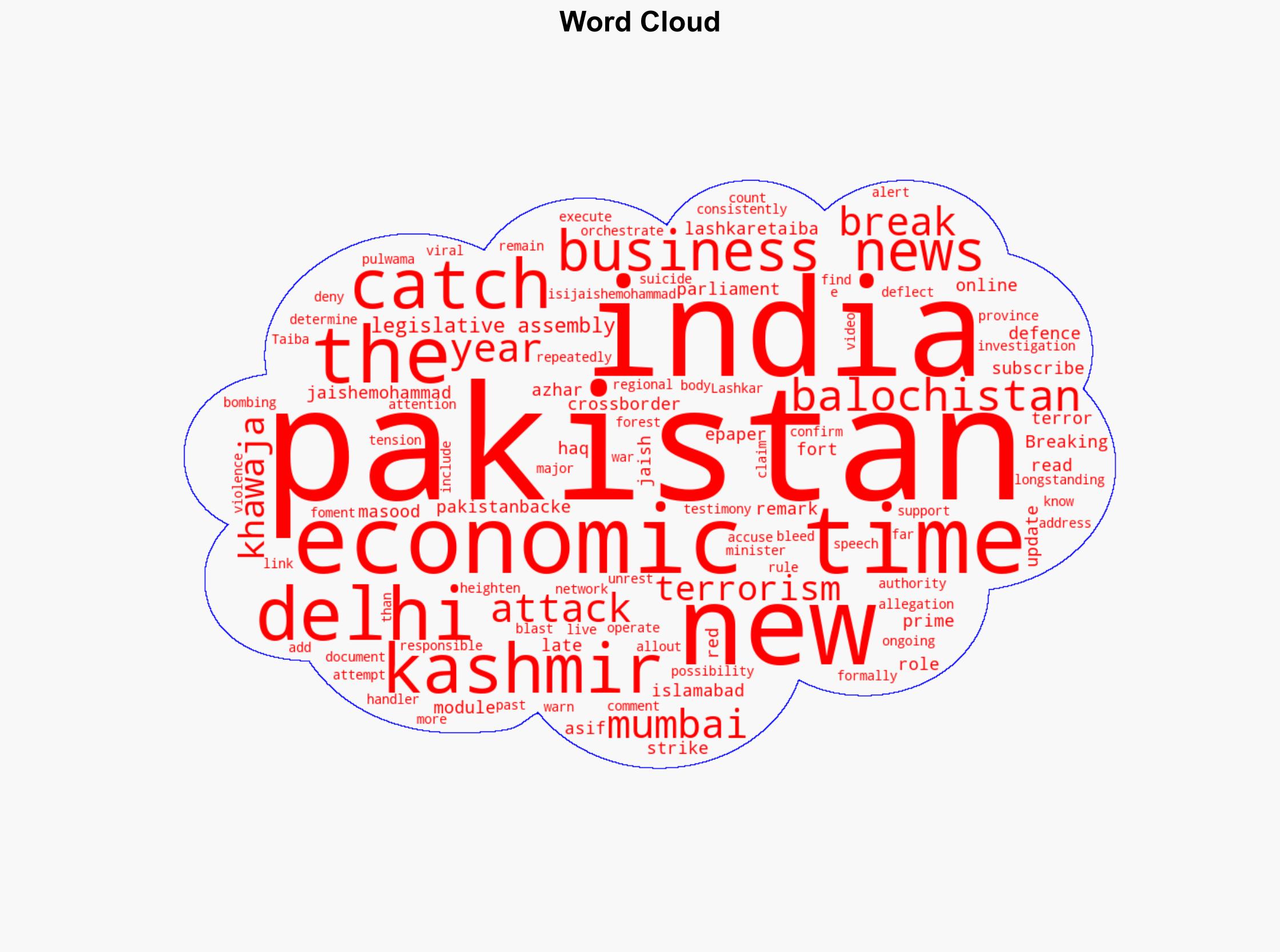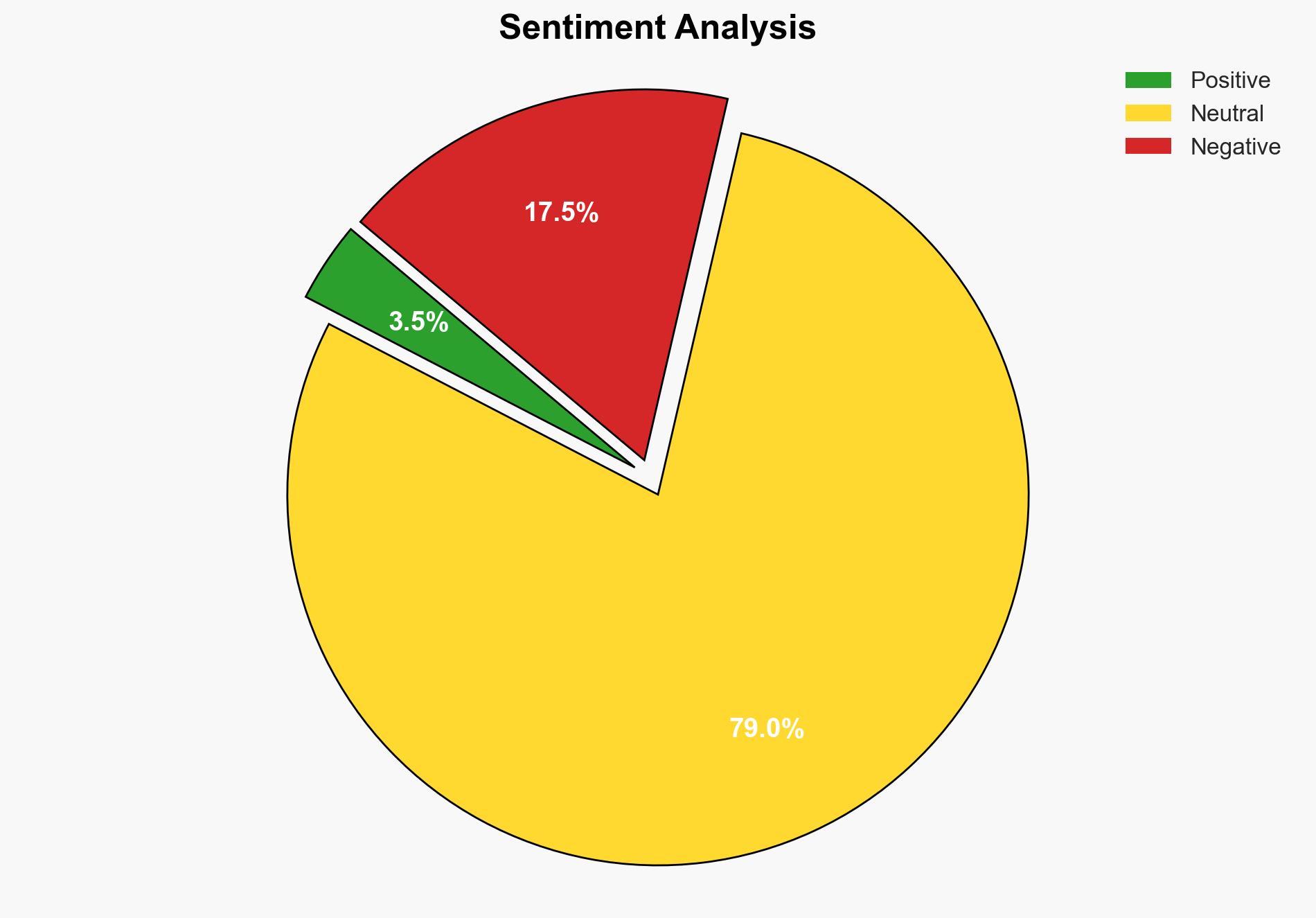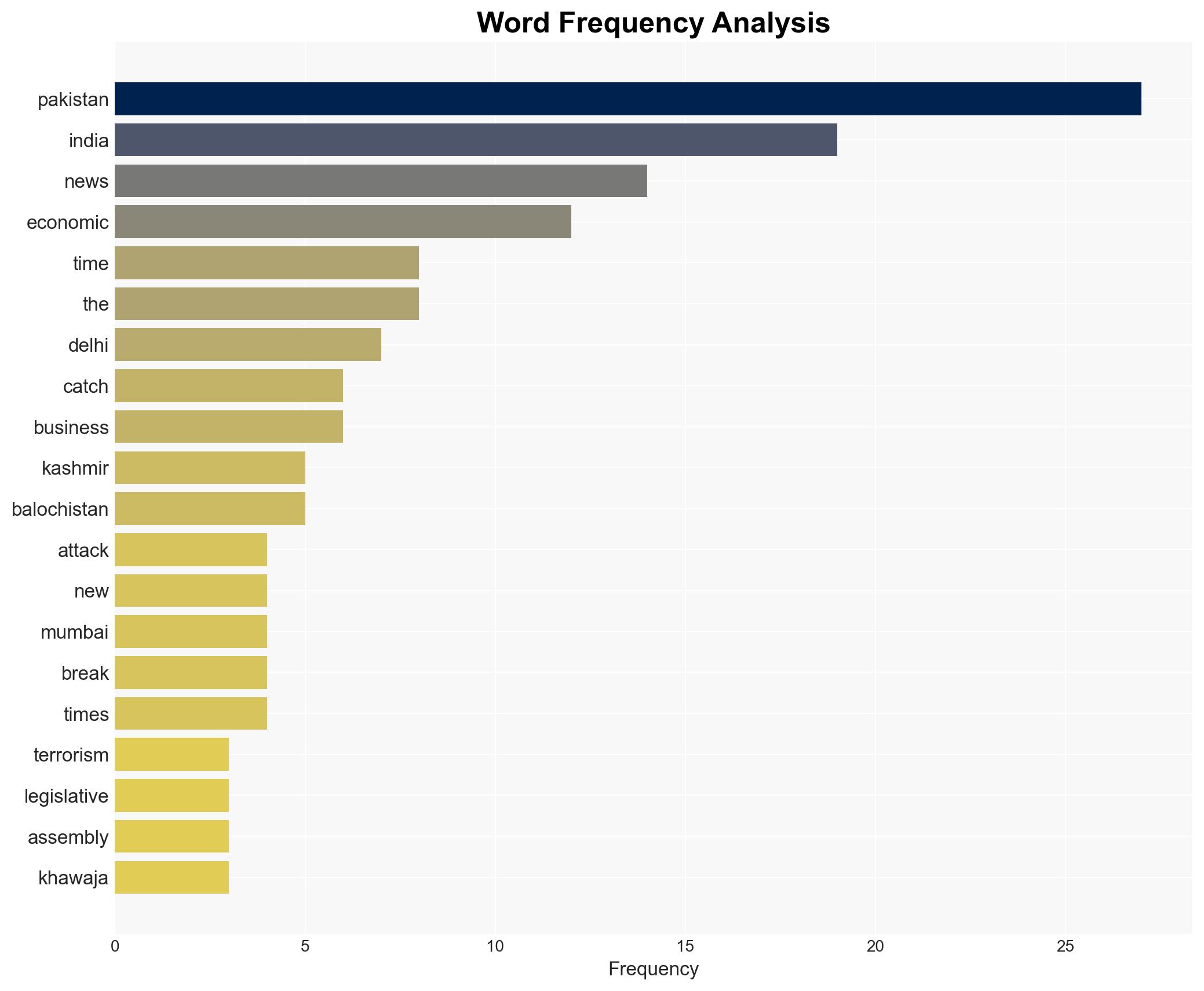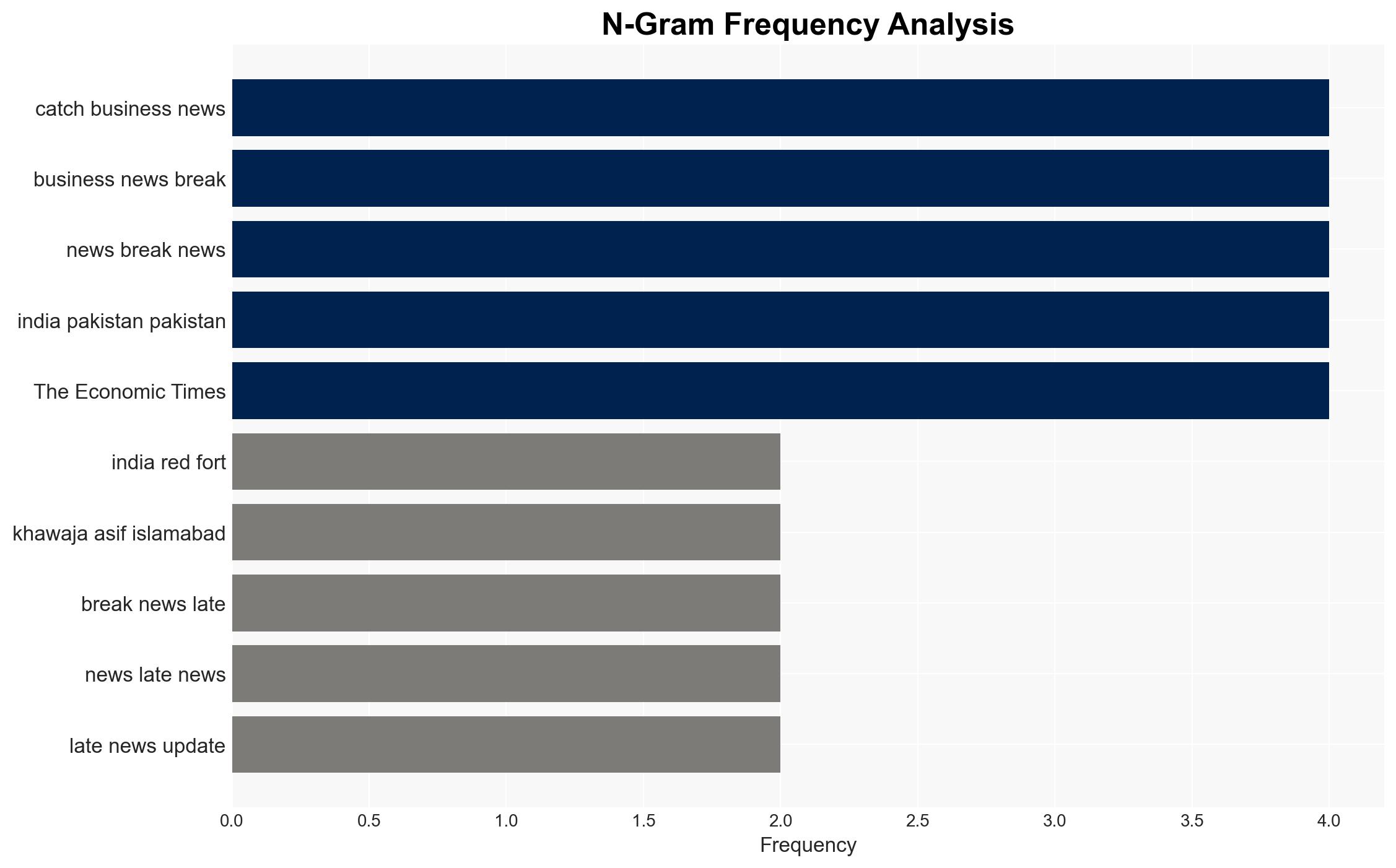Pakistan admits hand in Delhi bomb blasts Viral video shows ex-PoK PM boasting of hand in Red Fort bombing – The Times of India
Published on: 2025-11-20
AI-powered OSINT brief from verified open sources. Automated NLP signal extraction with human verification. See our Methodology and Why WorldWideWatchers.
Intelligence Report:
1. BLUF (Bottom Line Up Front)
The most supported hypothesis is that the viral video of the ex-PoK PM’s remarks is a strategic maneuver by Pakistan to deflect attention from its involvement in cross-border terrorism. Confidence level: Moderate. Recommended action: Increase intelligence operations to monitor and verify the authenticity of the claims, while engaging in diplomatic channels to address potential escalations.
2. Competing Hypotheses
Hypothesis 1: The ex-PoK PM’s statement is an accurate admission of Pakistan’s involvement in the Delhi bomb blasts, reflecting a shift in Pakistan’s policy towards overt acknowledgment of past actions.
Hypothesis 2: The statement is a strategic deception or a misinterpretation, aimed at deflecting attention from ongoing issues in Balochistan and Kashmir, and to provoke India into a reaction that could be used to justify Pakistan’s defensive posture.
Hypothesis 2 is more likely due to historical patterns of denial and deflection by Pakistan regarding its involvement in cross-border terrorism, and the timing of the statement coinciding with heightened tensions in Balochistan.
3. Key Assumptions and Red Flags
Assumptions: The video is authentic and the statements were not taken out of context. The ex-PoK PM has credible knowledge of Pakistan’s strategic operations.
Red Flags: The possibility of the video being edited or misrepresented. The ex-PoK PM may not have current or accurate information on Pakistan’s operations. The timing of the statement could indicate a deliberate attempt to manipulate regional tensions.
4. Implications and Strategic Risks
The statement could escalate tensions between India and Pakistan, potentially leading to military skirmishes or increased cross-border shelling. There is a risk of diplomatic fallout, affecting regional stability and international relations. Cyber and informational warfare could intensify, with both countries engaging in propaganda and misinformation campaigns.
5. Recommendations and Outlook
- Enhance intelligence gathering on Pakistan’s military and political communications to verify the authenticity of the claims.
- Engage in diplomatic dialogue with Pakistan to de-escalate tensions and address mutual concerns.
- Prepare for potential cyber and informational threats by strengthening cybersecurity measures and counter-disinformation strategies.
- Best-case scenario: The statement is dismissed as misinformation, and diplomatic channels prevent escalation.
- Worst-case scenario: The statement leads to military conflict and significant regional instability.
- Most-likely scenario: Continued diplomatic and military posturing without direct conflict, but with increased cyber and informational warfare.
6. Key Individuals and Entities
Ex-PoK PM (unnamed in the snippet), Khawaja Asif (Pakistan Defence Minister), Masood Azhar (linked to Jaish-e-Mohammad).
7. Thematic Tags
Regional Focus, Regional Focus: South Asia, India-Pakistan Relations, Cross-border Terrorism, Strategic Deception
Structured Analytic Techniques Applied
- Causal Layered Analysis (CLA): Analyze events across surface happenings, systems, worldviews, and myths.
- Cross-Impact Simulation: Model ripple effects across neighboring states, conflicts, or economic dependencies.
- Scenario Generation: Explore divergent futures under varying assumptions to identify plausible paths.
- Network Influence Mapping: Map influence relationships to assess actor impact.
Explore more:
Regional Focus Briefs ·
Daily Summary ·
Support us





